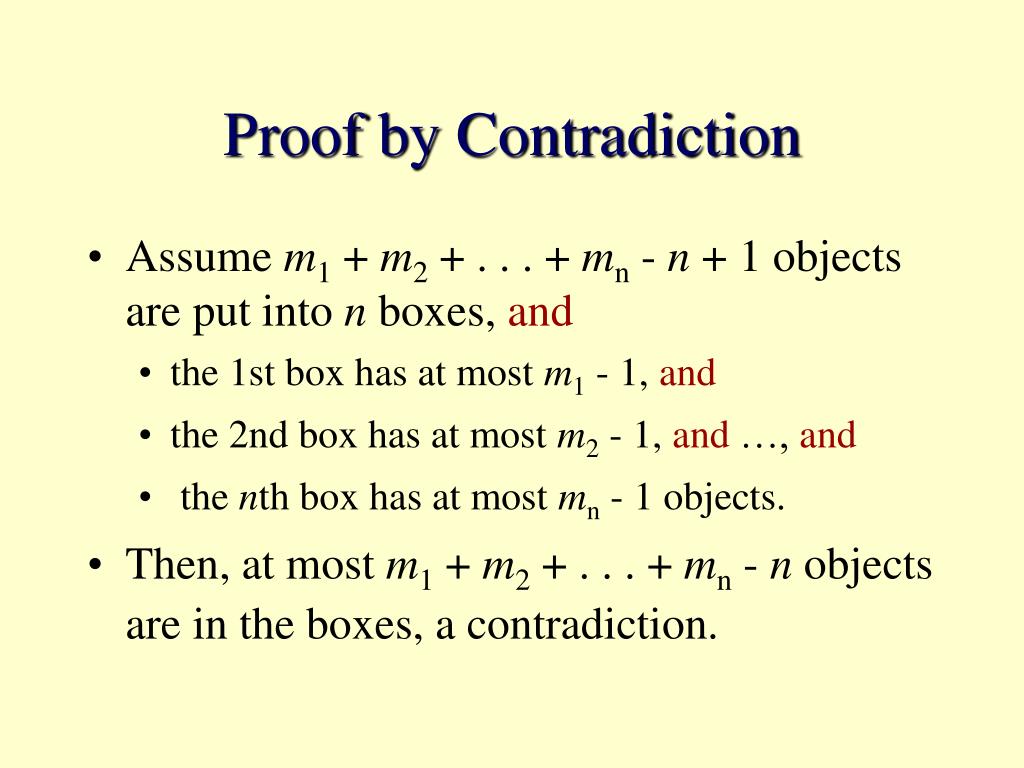
If we look at the big rectangles by columns, we only have possible ways to paint a column as Figure 6 shows. Since we have to deal with squares, let's narrow it down. įigure 6 - eight possible ways to color a column Therefore, among given integers, we definitely will find two integers whose difference can be exactly divided by. Have the same remainder when divided by, and so the difference is divisible by. Thus, their corresponding and ( where is the quotient it's an integer) ( where is the quotient it's an integer) There must be two of the 's that are the same such that Thus, by the pigeonhole principle, the average value =, so the maximum value is at least 2. Because of the bounds ( and ), there are possible values (pigeonholes) for each, but there are 's (pigeons). Let be the remainder that results from dividing by where. Given any positive integers, there must exist two integers whose difference can be exactly divided by. Two of the integers must be from the same pair, which sums to 9.ģ. By the pigeonhole principle, the average value =, so the maximum value is at least 2.

We are going to stuff five pigeons (chosen integers) into four pigeonholes (pairs). No matter which integer you choose, you can always pair it with another integer from 1 to 8 to sum to 9. If you pick 5 integers from 1 to 8, you will definitely find two of them must add up to 9. Therefore, we can definitely find two numbers that are a pair of consecutive numbers among the 51 chosen numbers.Ģ. There are definitely two pigeons share the same hole. There are 50 pigeonholes (pairs) and 51 pigeons (chosen numbers). Then there must be two consecutive numbers of among the chosen integers. Choose 51 numbers from integers between 1 and 100 inclusively. Here are 6 real world applications to give you a better grasp of this famous principle.ġ. Even though some statements seem out of order, they are actually connected inside and sometimes we need the pigeonhole principle to find the hidden connections. Pigeonhole principle can solve lots of seemingly unbelievable statements. At that time, Dirichlet named it Schubfachprinzip (drawer principle or shelf principle in English), so Dirichlet's box principle, Dirichlet's drawer principle also refer to pigeonhole principle. Dirichlet was the first person who formalized this idea in 1834. The pigeonhole principle is also called the Dirichlet principle, named after a German mathematician Johann Dirichlet.

Now we know that the two versions are actually talking about the same mathematical principle. Thus, the maximum value of the number of pigeons in a pigeonhole should be greater than one as well, which means that there must be at least two pigeons in a pigeonhole. We have only pigeonholes but more than pigeons the average value of pigeons per pigeonhole,, is greater than one. of real numbers, the maximum value is at least the average value.Ĭonsider the main image of putting pigeons into pigeonholes instead. For example, is a finite set with five elements. This is the famous pigeonhole principle.Ī more general version of pigeonhole principle is that for any non-empty finite set In mathematics, a set is a collection of distinct objects and a finite set is a set that has a finite number of elements. If more than pigeons are put into pigeonholes, then at least one pigeonhole must contain more than one pigeon.


 0 kommentar(er)
0 kommentar(er)
